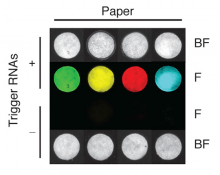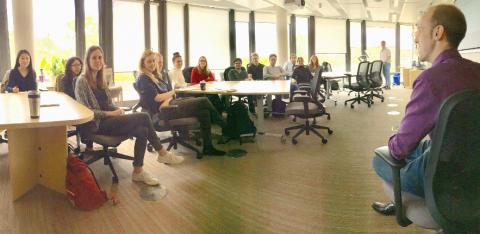Submitted by Dr O. Hadeler on Sun, 14/05/2017 - 00:38
By combining their scientific and managerial skills, the third cohort of Sensor CDT students will develop low-cost and open-source cell-free molecular diagnostics for biological and chemical sensor applications.
Low-cost, fast and reliable virus and chemical detection
The third student cohort has started its team challenge on cell-free molecular diagnostics tests for chemical or biological sensor applications.

In response to a growing need for enhanced capabilities in medical and environmental diagnostics the students' task is to develop low-cost open-source sensors to detect virus structures or polluting chemicals, such as arsenic, in an easy to use and rapid way.
Three months and twelve students
During this three months project the twelve students will use their engineering, physics, biology and chemistry skills as well as developing their project and people management skills.
Potential technology
The sensors will use synthetic biology to engineer safe cell-free gene networks which can detect specific analytes and produce outputs such as a colour change.
|
|
 |
Several sensor platforms are possible, inlcuding paper based microfluidics. A key challenge will be the design of quantitative sensors. Here the student cohort will need to combine its know-how across the physical and biological sciences.
Scientific support and impact
The team challenge will run until middle of August, with plenty of opportunity for the students to interact with experts in the field from academia and industry as well as with students from the previous Sensor CDT cohorts working on relevant PhD projects and a group of undergraduate engineering students. Key guidance and advise will be provided by OpenDiagnostics, a student-led team which has carried out some pioneering work in this area.
At the kick-off workshop the Sensor CDT students collectively brainstormed a variety of possible avenues to approach this challenge.
Previous team challenges on assisted living for the elderly and a 3d optical imaging system have been highly successful.
Read more here.



